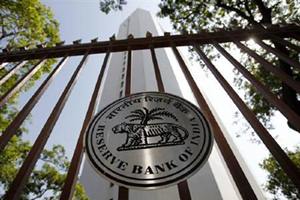The monetary policy review scheduled to take place on Tuesday has been preceded by a promising set of numbers – those pertaining to both gross domestic product (GDP) and inflation. The GDP data revealed that consumption has grown at a healthy pace and the inflation data suggested that the numbers are unlikely to skyrocket any time soon, according to HDFC Bank chief economist Abheek Barua. In an interaction with Pranay Lakshminarasimhan, Barua gave FE his take on both sets of data, global and domestic commodity prices and his view on what the Reserve Bank of India (RBI) will do in its monetary policy review on Tuesday. Excerpts…
What was your take on the GDP data announced recently?
I think the numbers were in line with expectations. My take is that the data suggests a gentle recovery. We thought investments would come in higher but honestly, there has been a derailment of private investment over the past four-five months because at that time there was some news that projects had started stalling again. See, the government’s capital spending is not enough to cover for any kind of weakness in private investment. They have shown a high consumption number and I think that will continue along with rural consumption. I see us hitting the 8% level by the end of the current fiscal year and kind of staying there.
What do you make of the trend in inflation?
Inflation trend is more a play on food prices and what moves up and down. Core inflation is slightly higher than expected, but I don’t think there is any major threat in terms of core inflation. So given all that, inflation will be around 5% if global commodity prices don’t move up sharply, which it is unlikely to. But I don’t think we will get to the 2% number in a hurry.
What about domestic commodity prices? Do you see them rising given that the forecast for the monsoon this year is extremely positive?
I have seen many monsoon forecasts in the past. So, I think there are other issues to be dealt with. First of all, excess monsoon can have a negative impact. Very heavy rains, especially in the east, would damage crop to a great extent. What we have so far suggests that largely southern India and parts of northern India will receive the ideal amount of rain for a good harvest. But other parts of the country may receive a little extra. So we will have to see how all this pans out but if it does this way, we could see an impact on prices of pulses.
You mentioned that the GDP data showed a positive trend in consumption. What about manufacturing?
Manufacturing is still muted. Broadly, I think manufacturing will stay at these 9% levels, where softening in value addition will be offset by a genuine rise in volumes.
What do you think the RBI will do in the monetary policy review this time?
I think the RBI’s current focus is on liquidity and it has been infusing huge amount of liquidity in the system. This year so far we have had around Rs 70,000 crore of liquidity addition. It doesn’t really matter whether it cuts rates or not, because the improvement in liquidity could push a faster transmission of rate cuts that have already happened.
